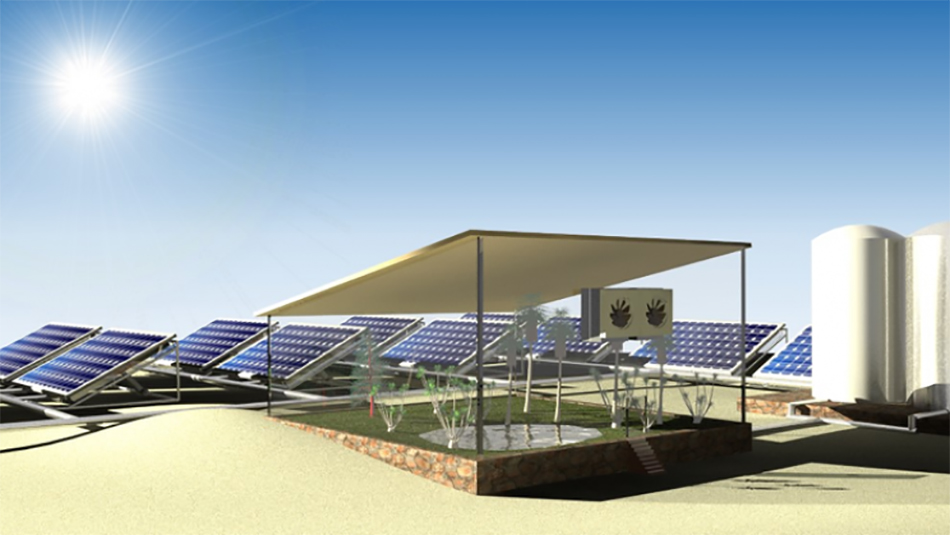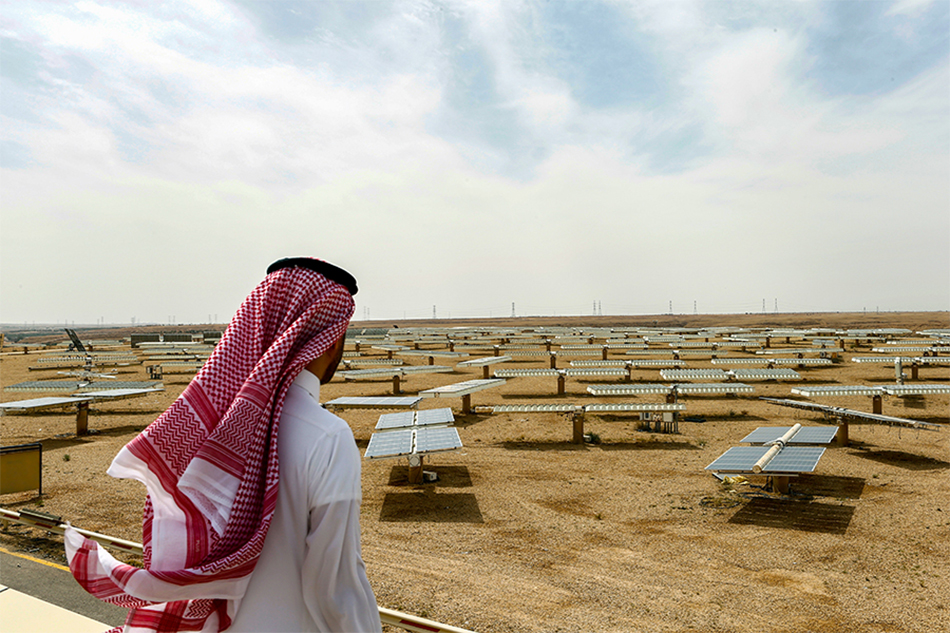Creating Clean Water in the Desert From Solar Panels’ Waste Heat
The energy that hits solar panels is underutilized. The truth is the system wastes most of the energy, according to researchers. They spent several years trying to find out how much electricity they can get from solar panels. Peng Wang, an energy technology researcher, said that the energy hitting solar panels only produces less than 20 percent electricity. The rest of the energy turns into heat. With this process, the solar panels have lower efficiency.
Peng Wang and his research team at Saudi Arabia’s King Abdullah University have a different approach to the process. They finally found the means to use waste heat. Their new system is described in their research paper published in the Cell Reports Physical Science, an academic journal. The researchers’ system uses waste heat to draw in water from the air in the desert.
The king’s pet project
In 2009, Peng Wang earned his Ph.D. from the University of California Santa Barbara. A few months after, the King Abdullah University of Science and Technology had its grand opening. A journalist covering the event said that the university is a pet project of the king of Saudi Arabia. But the university is a graduate-level institution. Its primary aim is to research how to tap solar power, genetically alter plants, and desalinate water. These objectives are to ensure survival in the harsh desert climate and conditions.
Wang earned his Ph.D. from the University of California Santa Barbara in 2009, just a few months before the grand opening of King Abdullah University of Science and Technology (KAUST). He joined the university and is currently a professor of Environmental Science and Engineering. The university received a $10 billion endowment for research projects.
Eye-opening scenes
As Professor Wang toured the desert, he did not expect the different conditions in the rural areas in Saudi Arabia. He learned that in the small villages outside of the city, water is a precious commodity. They can only have water by transporting the liquid by truck.
With what he saw, the professor decided to adjust the research program. He wanted his team to find alternative methods to create energy, food, and water. His objective is to provide a decent life to people living in the desert.
Water is everywhere but mostly inaccessible
Globally, many communities still do not have access to clean drinking water. It is a pervasive problem. About two billion people worldwide lack access to safe drinking water.
However, there is water all around us. Not from the rivers, seas, and oceans. Water in vapor form is available all the time. Every year, 37 trillion tons of water vapor cycle around the atmosphere. The problem is how to harness it and transform it into liquid water. While several researchers tried atmospheric water harvesting, they only did small-scale experiments. They realized that large-scale harvesting of water from the atmosphere is challenging.
Harnessing waste heat
Peng and his team worked on a new method for many years. They are using a type of hydrogel that includes hygroscopic salt, which attracts the water molecules and a porous interconnected polymer structure that collects the water molecules.
The hydrogel that Wang’s team uses can release the water molecules at lower temperatures compared to other materials. Based on their various experiments, they found out that the excess heat coming from a solar panel’s back is enough to retrieve the water molecules. The excess heat is already 50 degrees higher than the air’s temperature.
Two ways of working
The invention works in two ways. In the cooling mode, they expose the hydrogel to the open air during the daytime. At night, the hydrogel collects the water molecules. The next day, as the sun heats the solar panels, the molecules evaporate. During the evaporation phase, the water takes the excess heat energy.
Professor Wang said that in crop production mode, the reverse happens. They expose the hydrogel material to the air at night. They seal it off during the daytime, trapping the water released by the hydrogel. The system condenses the evaporated vapor inside a collection chamber.
The invention is still in the experimental stage, with the professor saying modestly that they are only producing enough water to grow spinach. But it is their first proof that the invention works. He said that is optimizing the system to improve its performance.
He added that it is a win-win situation, as the technology can create two essential resources, electricity and water, simultaneously.
The research team clarifies that the system will have more impact on solar farms, where water is also a precious commodity. Right now, the team says that it is not possible to rely on large-scale production of water, as no water pipelines are available. Delivering the water by land transport will be costly. It is better to have localized systems, as they will be closer to the people who need water.
The research team is serious about making a low-cost water production system and prays that NGOs and governments can give their support. They added that they are scientists and have no definite strategy to move the product from the lab to the market. However, they are sure that they continue to move forward with their research.

